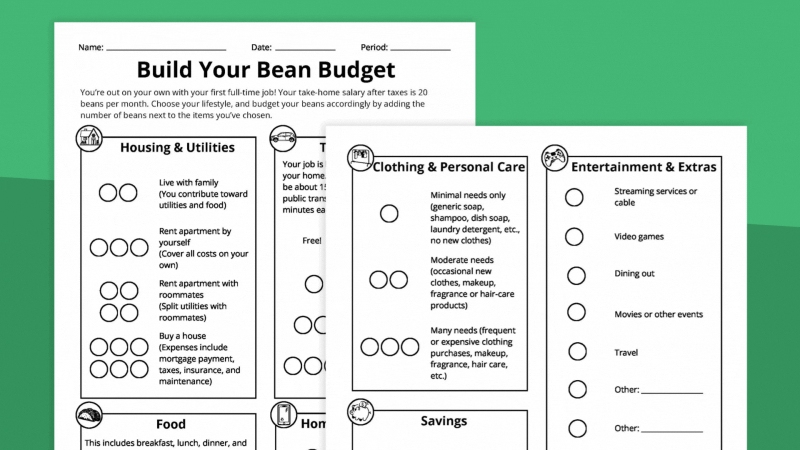As writing instructors, we often see students with rigid ideas about what writing is “supposed” to look like: Topic sentence here. Quote Sandwich there. Five-paragraph format to tie it all together in a neat package. Formulas like these are a double-edged sword for teachers. We know they can stifle creativity and voice, but they can also be a useful starting place for struggling students, like grabbing onto a life-preserver in the ocean because you can’t swim.
Teachers often use formulas to address such struggles to aid students as they learn new genres and genre conventions. But formulas, like life preservers, while sometimes necessary, will eventually be a hindrance to the kind of writing (swimming) we are aiming for. They can too easily become fossilized “how-to’s” that students over-rely on, reified as “rules” in students’ minds. As Kerry Dirk notes, while genres often have formulaic features, these features can change even as the nature of the genre remains, leaving students without the support they need (253).
As writing teachers, our actual goal must be to teach students how to swim—to think rhetorically, to develop their own voice, and to gain awareness of the many genres they may need in their academic and professional lives. Swimming is hard, especially when students feel the waves are too rough or the water is too deep, but students can only rely on our lifelines for so long. Formulas, when too rigid, will hinder growth, especially if they become divorced from the genre and rhetorical complexities they were designed to help students manage. Teachers contribute to this problem when we encode formulas into our assessment practices. When we grade students on their ability to enact a formula, we have unwittingly taught them to believe that writing is merely a mechanical series of steps, and we’ve hidden from them the complexities that writing entails. If mastering a genre were simply a matter of following a formula, “we would all be capable of successfully writing anything when we are given [that] formula. …but writing is not that easy” (Dirk).
Indeed, when taught in a rigid way, formulas can harm students’ motivation as writers. Heavily regulated, formulaic writing assignments alienate students from their own rhetorical thinking, and promote a mechanistic view of learning, where learning becomes synonymous with assessment.
So what’s the alternative?
Chris Mays provides a helpful lens for understanding the place of formulas in writing classrooms. Mays takes up the problem that “writing is too big, too complex, and too expansive” to be encoded in discrete formulas or reducible to a series of steps. But rather than eschew formulas altogether, Mays embraces them. He writes that although writing involves an almost “vertiginous” range of chaotic elements and contextual choices, it also shows “a remarkable tendency toward provisional stabilities” that help reduce complexity. Experienced writers create provisional stabilities for themselves by making a temporary cut—e.g. limiting complexity by establishing a boundary around a specific section of the larger system. Making a cut allows us to act; Mays argues that complex systems can only be navigated by temporarily creating a boundary around a smaller, frozen slice.
We can tame writing complexities for students by helping them perceive formulas as examples of temporary stabilities rather than discrete rules or regulations. A temporary stability is a necessary fiction, a slice of static knowledge that acknowledges its limitations. Stabilities offer students a lens on an aspect of writing that they can analyze, learn, and practice.
Into the classroom: How to use formulas in a non-formulaic way
Be transparent about the difference between a rule and a lifeline
Transparency is one way to help students understand that formulas are provisional stabilities that help writers navigate complexity. We begin our writing courses by asking students to come up with a list of all the rules of writing they’ve been told over their academic career: “Don’t use ‘I’,” “Topic sentences at the start of paragraphs,” “Thesis statement at the end of the opening paragraph.” We then discuss with students both the limitations and utility of these formulaic rules, with the ultimate goal of helping students understand why teachers often require these rules. Toward this ultimate goal, we have found it useful to share the swimming metaphor to our students, describing generalized writing rules and high school formulas as lifelines or life jackets for turbulent water. Helping students see the reasons for the formula can demystify and contextualize it, giving students agency to make decisions about when to rely on the formula and when to stray away from it, and to leave the life jacket behind.
Use metacognitive questions and reflections
After a more general discussion about the role formulas play as temporary stabilities when learning how to write, we ask students to examine a specific stability (for example, formulas for paragraph structure) and consider its potential. Students have usually learned several variations of paragraph formulas in high school: for example, the PIE or TEA method (Point, Information, Explanation, or Topic, Evidence, Analysis). We invite students to consider how well these paragraph formulas work in rhetorical contexts beyond school. Students examine paragraph structures in a variety of contexts and discuss the utility of paragraph formulas. We remind students that they don’t have to abandon the formula, but they do have choices to make about when and how to use it. And we invite them to discover other paragraph stabilities in other rhetorical contexts: What other paragraph structures do writers use?
Teaching students to analyze formulas as temporary stabilities can show them the value of putting a topic sentence at the start of a paragraph (it makes it easier for a reader to know what their point is) while also acknowledging the limitations of the stability. Empowering students to choose which stabilities they want to use and when helps them use formulas more strategically and move past them when necessary. Such rhetorical dexterity is crucial for learning new genres, and for transferring learning across contexts.
These lessons are anchored in metacognitive questions: What did the stability allow you to communicate? What did it hinder? How comfortable do you need to feel in a writing context before you can swim without assistance? Do all writers need at least some lifelines to help them achieve their rhetorical goals?
Be aware of the importance of stabilities for students’ development and mental health
Part of our metacognitive approach involves asking students to consider why they are drawn to stabilities even as they chafe against their constraints. For some students, prescriptive formulas help them feel less overwhelmed; formulas provide ballast against stressful complexity, a way to manage anxiety and cognitive overload. This is especially true for many of our students who often hold down jobs, commute long distances to campus, and feel under-prepared for college. Teaching students to see formulas as temporary stabilities can help them manage their anxieties about writing without contributing to over-reliance on rules and formulas.
Give students low-stakes opportunities to experiment with and without formulas
Low-stakes learning environments encourage the kinds of risk-taking that student writers need if they are to experiment with formulas as temporary stabilities rather than permanent safety features. In our classes, we use contract and self-grading approaches to create room for students to explore new formulas or abandon old ones. Students have ample opportunity to try and fail, revise, and re-try without worrying about how it will affect their grade.
Teaching students that formulas are temporary stabilities that help writers navigate complexity makes formulas feel more authentic and practical for students. They learn that a formula is not a platonic ideal, but a potentially useful stability that allows them to float, and then swim, on their own.
Todd Walker teaches integrated reading and writing courses at multiple community colleges in the Pacific Northwest.
Jennifer Trainor teaches writing at San Francisco State University. She has written on equity and racial justice pedagogies, student engagement, and antiracist assessment.
References
Dirk, K. (2010). Navigating genres. Writing spaces: Readings on writing, 1, 249-262.
Inoue, A. B. (2019). Labor-based grading contracts: Building equity and inclusion in the compassionate writing classroom. Fort Collins, CO: WAC Clearinghouse.
Mays, C. (2017). Writing complexity, one stability at a time: Teaching writing as a complex system. College Composition and Communication, 559-585.
Soliday, M., & Trainor, J. S. (2016). Rethinking regulation in the age of the literacy machine. College Composition & Communication, 68(1), 125-151.
Warner, J. (2018). Why they can’t write: Killing the five-paragraph essay and other necessities. JHU Press.
The post Should We Teach Students Formulas for Writing? appeared first on Faculty Focus | Higher Ed Teaching & Learning.
As writing instructors, we often see students with rigid ideas about what writing is “supposed” to look like: Topic sentence here. Quote Sandwich there. Five-paragraph format to tie it all together in a neat package. Formulas like these are a double-edged sword for teachers. We know they can stifle creativity and voice, but they can also be a
The post Should We Teach Students Formulas for Writing? appeared first on Faculty Focus | Higher Ed Teaching & Learning. Effective Teaching Strategies, assessing student writing, student writing, writing, writing formulas Faculty Focus | Higher Ed Teaching & Learning







